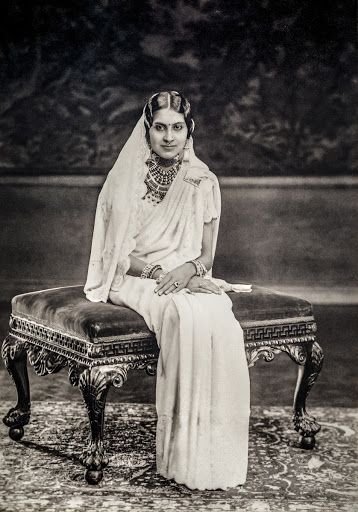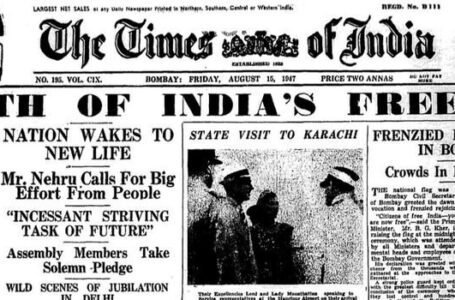Splendor, Elegance and Philanthropy: The Life of Rani Yashoda Devi of Patiala

In the rich tapestry of Indian history, few stories captivate as much as those of the maharajas and maharanis whose opulent lifestyles and exquisite tastes left an indelible mark on the world. Among these luminaries, Maharani Yashoda Devi of Patiala stands out not only for her grace and charm but also for her legendary collection of jewels—a testament to the enduring allure of Indian royalty.
The early 20th century marked a pivotal period in India’s history, particularly for its princely states, where monarchs wielded significant influence over their domains. These princely states, varying in size and power, played crucial roles in India’s socio-political landscape. Maharaja Bhupinder Singh of Patiala was among the most prominent figures of this era, renowned for his progressive reforms and his penchant for extravagance, notably in his patronage of arts and craftsmanship.

During this time, European influence on Indian royalty was profound. The colonial encounter had introduced Indian rulers to Western ideas, technologies, and, significantly, aesthetics. European jewellers, particularly those from renowned houses like Cartier, became sought-after artisans for Indian royalty eager to blend traditional opulence with contemporary European styles. The result was a fusion of cultures reflected in the magnificent jewels that adorned the maharajas and maharanis of the time.
In the 1930s, Vandyak Studios immortalized Maharani Yashoda Devi bedecked in her husband’s most cherished jewels, exuding a timeless elegance that transcends generations. The portrait, captured with meticulous detail by the studio’s photographers, showcases not just the physical beauty of the Maharani but also the symbolic power of the jewels she wore. Each piece spoke volumes about her status, her role as a consort to Maharaja Bhupinder Singh, and her personal taste in jewellery—a taste that rivaled the grandeur of any European royalty.
The “Patiala Necklace,” perhaps the most iconic of Maharaja Bhupinder Singh’s commissions, remains a masterpiece that epitomizes the fusion of Indian wealth and European craftsmanship. Designed by Cartier, this necklace boasted an astonishing 2,930 diamonds, including the renowned “De Beers,” making it one of the most expensive and extravagant pieces of jewellery ever created. Its creation was not merely an exercise in luxury but a statement of power and prestige, a tangible symbol of the Maharaja’s wealth and influence.
The relationship between Cartier and Indian royalty, particularly Maharaja Bhupinder Singh of Patiala, was more than just a commercial transaction—it was a testament to mutual admiration and respect for craftsmanship. Cartier, established in 1847 in Paris, had already earned a global reputation for its exquisite jewellery and accessories by the time it captured the attention of Indian royalty.
For Cartier, the Indian market represented not only a lucrative opportunity but also a chance to showcase its craftsmanship on a global stage. The commissions from Maharaja Bhupinder Singh, including the “Patiala Necklace” and other bespoke pieces, solidified Cartier’s position as the jeweller of choice for discerning royals worldwide. The collaboration between Cartier and Indian royalty underscored the era’s spirit of cultural exchange and mutual fascination, where East met West in a glittering display of artistry and luxury.

In Indian royal households, jewellery held profound significance beyond its aesthetic appeal. It served as a marker of status, lineage, and power, with each piece often carrying centuries-old legacies. Many princely states boasted their own family jewellers, artisans who had honed their craft over generations and whose creations were passed down as heirlooms through royal dynasties. These family jewellers were custodians of tradition, employing techniques and designs that spoke to India’s rich cultural heritage.
Beyond her role as the consort of Maharaja Bhupinder Singh, Maharani Yashoda Devi of Patiala was a patron of art and culture in her own right. Her patronage extended not only to jewellery but also to various forms of artistic expression, including music, dance, and literature. She was known for her keen interest in traditional Indian arts as well as her appreciation for Western influences, which she integrated harmoniously into the cultural life of Patiala’s court.
The portraits of Maharani Yashoda Devi wearing the jewels commissioned by Maharaja Bhupinder Singh serve as poignant reminders of her elegance and sophistication. In each image, she embodies the grace and poise expected of a royal consort, while the jewels themselves reflect her refined taste and appreciation for craftsmanship. The ruby and pearl necklace, another masterpiece from Cartier, highlights her status as a style icon whose influence extended far beyond the walls of Patiala’s palace.
The allure of Indian royalty and their exquisite jewellery extended far beyond the subcontinent. European and American audiences were captivated by tales of maharajas and maharanis adorned in diamonds, rubies, and emeralds, symbols of a world steeped in tradition yet embracing modernity. The photographs of Maharani Yashoda Devi and other Indian royals wearing their jewels became iconic images that graced the pages of international magazines and newspapers, cementing their status as global style icons.
Cartier, in particular, capitalized on the allure of Indian royalty to expand its international clientele. The bespoke pieces created for Maharaja Bhupinder Singh, including the “Patiala Necklace,” were featured prominently in Cartier’s marketing campaigns, showcasing the house’s ability to cater to the tastes of elite customers worldwide. The association with Indian royalty not only enhanced Cartier’s prestige but also contributed to the broader cultural exchange between East and West during the early 20th century.

As we reflect on the legacy of Maharani Yashoda Devi and other Indian royals, one cannot help but be inspired by their enduring legacy of elegance, sophistication, and cultural patronage. Their appreciation for jewellery not only adorned their physical selves but also enriched the cultural tapestry of India and the world. The jewels they commissioned and wore tell stories of love, power, and artistic expression—a testament to the transcendent power of beauty and craftsmanship.
In conclusion, Maharani Yashoda Devi’s life and her exquisite jewels serve as poignant reminders of an era when glamour and tradition merged seamlessly, leaving behind a legacy that continues to captivate and inspire. Her story, intertwined with the history of Patiala’s royal court and its patronage of Cartier, reflects a chapter in India’s past where art, culture, and luxury converged in dazzling splendor. As we celebrate their contributions to global culture, we honor their enduring impact on the world of jewellery and beyond.
Further celebrating the extraordinary life of Rani Yashoda Devi of Patiala, let us delve into her tireless efforts in social reform, cultural preservation, and women’s empowerment reshaped her community’s destiny. From championing education and healthcare to fostering local arts and crafts, her works echo through generations, igniting hope and opportunity. Let us honor her legacy by embracing our heritage and advancing towards a more inclusive tomorrow.

Maharani Yashoda Devi of Patiala, left a lasting legacy through her remarkable achievements and philanthropic endeavors. Born in 1913 in the princely state of Patiala, she was the daughter of Maharaja Sir Pratap Singh of Jammu and Kashmir. Her marriage to Maharaja Bhupinder Singh of Patiala further expanded her platform for philanthropy and social service.
Throughout her life, Maharani Yashoda Devi demonstrated a deep commitment to improving the welfare of the people, especially in the areas of education and healthcare. Among her notable achievements and contributions:
Maharani Yashoda Devi recognized the importance of education in empowering individuals and communities. She played a pivotal role in establishing numerous schools and educational institutions in Patiala, providing access to quality education for children, particularly girls. Her efforts contributed to the promotion of literacy and the advancement of educational opportunities, especially for women who were often marginalized in traditional societies.
Concerned with the well-being of the less fortunate, Maharani Yashoda Devi spearheaded initiatives to improve healthcare services in Patiala and its surrounding regions. She founded hospitals and healthcare centers, ensuring that essential medical care was accessible to those in need. Her philanthropic endeavors in healthcare helped alleviate suffering and improve the quality of life for countless individuals.
Maharani Yashoda Devi was deeply involved in various social welfare projects aimed at uplifting disadvantaged communities. She supported initiatives focused on poverty alleviation, women’s empowerment, and community development. Her advocacy for social justice and equality resonated throughout her philanthropic work, making a positive impact on the lives of many.

In addition to her contributions to education and healthcare, Maharani Yashoda Devi was also a patron of the arts and culture. She supported artists, musicians, and cultural institutions, fostering a rich cultural heritage in Patiala and beyond. Her efforts to preserve and promote cultural traditions contributed to the enrichment of society and the preservation of cultural identity.
Maharani Yashoda Devi’s legacy continues to inspire generations, serving as a testament to the transformative power of philanthropy and compassionate leadership. Her dedication to social welfare, education, healthcare, and cultural promotion has left an indelible mark on the history of Patiala and serves as a shining example of selfless service to humanity.
In commemorating Maharani Yashoda Devi of Patiala, we celebrate not only her exceptional elegance and taste in jewels but also her profound impact as a cultural patron and philanthropist. Her life epitomized the fusion of Indian opulence with Western craftsmanship, exemplified by the iconic “Patiala Necklace” and other exquisite pieces commissioned from Cartier. Beyond adornments, her legacy resonates through her contributions to education, healthcare, and social welfare, which continue to uplift communities in Patiala and beyond.


